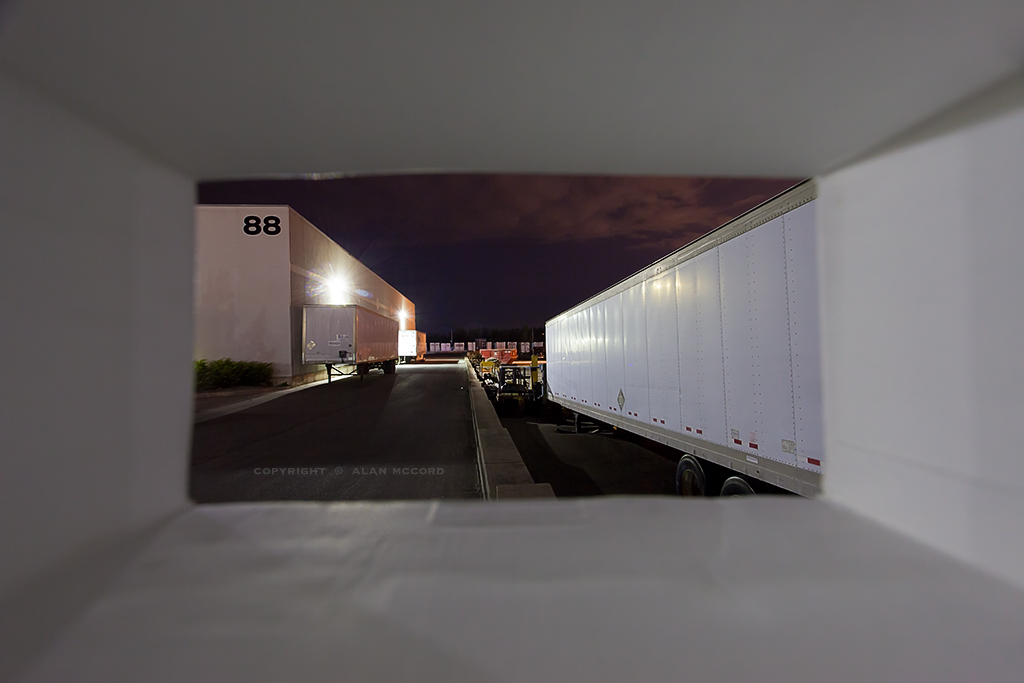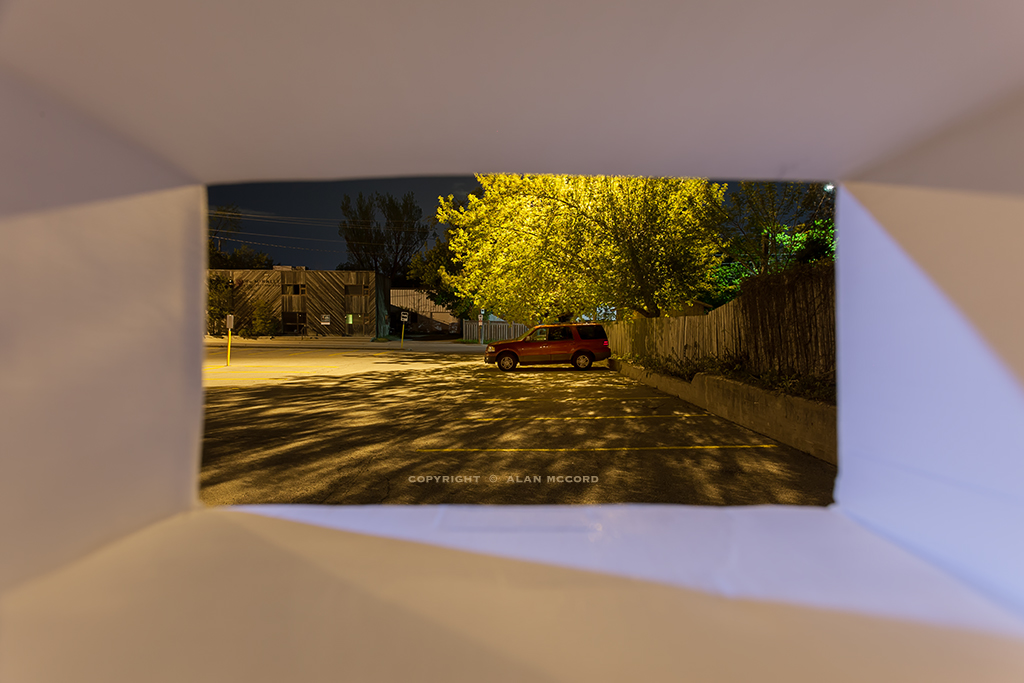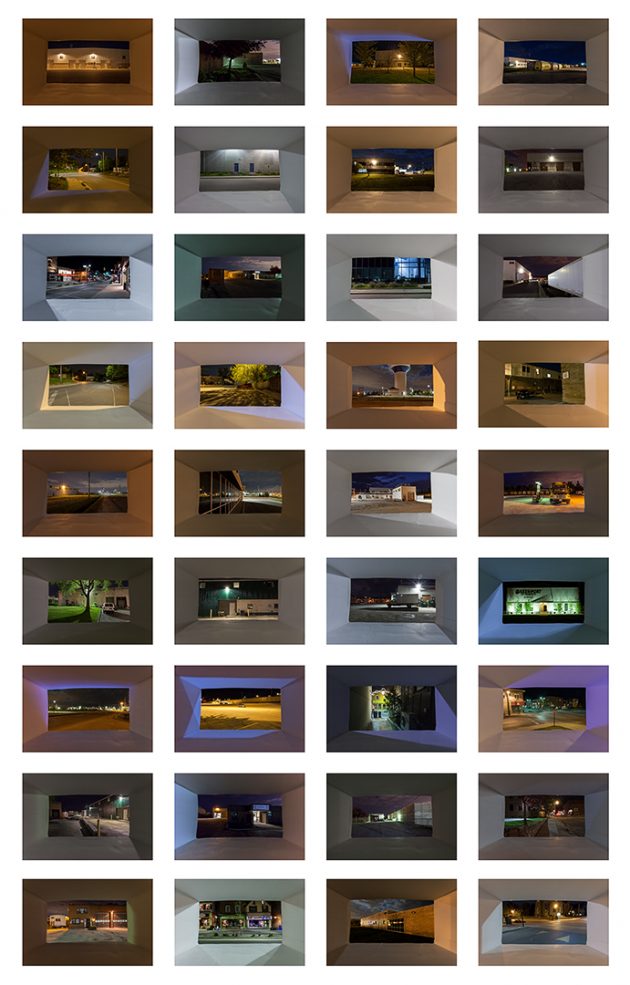The Viewing Box

Once a year, at the local municipal art gallery, they hold an exhibition called Locally Grown. It is a look at what some of the local artists are up to.
In 2018, I entered a piece that was successful in being accepted. Called ‘The Viewing Box – Night; May 15th, 2016’, it is a series of images designed to encourage viewers to consider photography as a means to construct narrative and to not necessarily trust our eyes.
When viewed from a distance the viewer sees the imagery as abstraction; the photos are nothing more than point sources of colour ordered into a grid; each frame like a brick in a building – sort of an architecture.
As the viewer approaches The Viewing Box, the individual imagery begins to come to light. At middle distance, the spaces between the images in the grid show an illusion of darker circles that are not physically present; they are a figment of the imagination that highlights how our brains are wired to consume imagery and how, in certain circumstances, our minds can be fooled by what lies before our eyes. We need to give consideration for what lies outside the frame.
“Framing is the most important act for me in this whole process…whatever is in the frame is preserved, and defines the whole world that will be preserved; and what’s outside the frame is gone forever” – Wim Wenders (German filmmaker, playwright, author, and photographer)
When viewed up close, the individual images in the piece reveal their specific content. The images themselves are nothing but random pictures from around my hometown, shot at night. Including physical borders within the image space, via a cardboard box affixed to the camera lens, reminds viewers that the camera is an abstraction introduced by the image maker. By putting borders around random snippets of Halton Hills, the act of photography attempts to say; these scenes – of a myriad of possible details in the world around us – are worthy of attention.
But are they?
Why these scenes? Can I trust my eyes? Is the narrative behind the images real or ‘fake’? What is being ‘said’?
In his book, The Black Swan; Nassim Taleb speaks about the fallacy of most narrative; “both artistic and scientific enterprises are the product of our need to reduce dimensions and inflict some order on things. Try to describe the world around you and you will find yourself tempted to weave a thread into what you are saying”.
The Viewing Box imagery is an attempt to show how photography can weave narrative (and/or force the viewer to weave narrative) as well as highlighting the need for the viewer to consider images in a broad or fuller context.
An arrangement of twenty-four 6” by 9” photographs printed and spaced equally on an 24” by 36” piece of aluminum.





